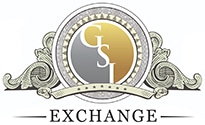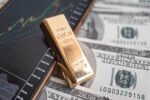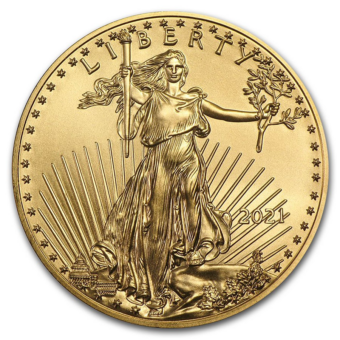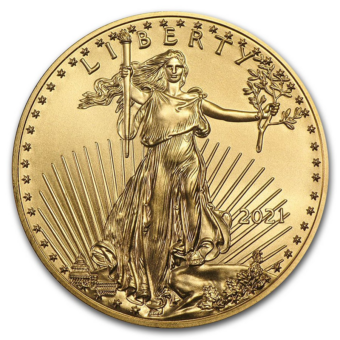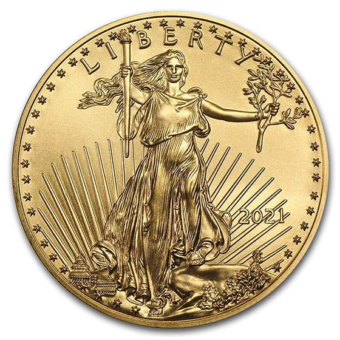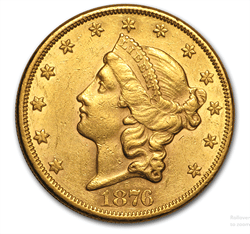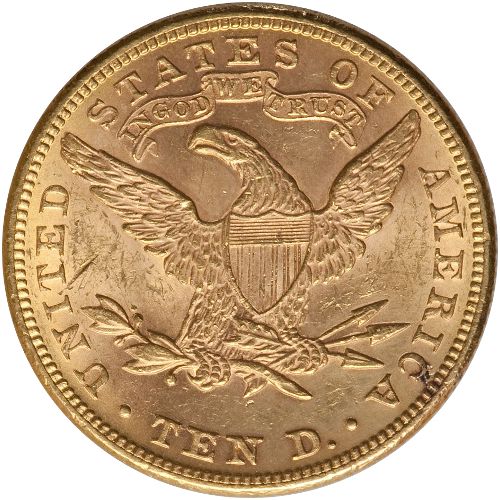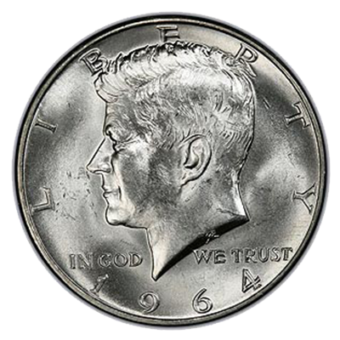A Daily Journey Through the Week's Market
Monday - 10.14.24: Gold prices saw slight pressure, stabilizing near $2,676 per ounce, as retail sales data from September exceeded expectations. Investors remain cautiously optimistic, balancing economic strength with ongoing Fed rate cut expectations. Silver also maintained its strength, hovering around $31.67, benefiting from positive sentiment in precious metals markets. Analysts suggested that the price action reflects healthy consolidation ahead of further potential gains.
Tuesday - 10.15.24: Gold and silver prices edged higher on Tuesday, with gold futures reaching $2,679. Retail sales data and Fed discussions on rate cuts provided mixed signals, adding volatility to the market. Central banks reiterated their commitment to gold purchases as a hedge against economic uncertainty, further boosting demand. Meanwhile, silver followed gold’s upward trend, closing at approximately $31.80.
Wednesday - 10.16.24: Gold prices continued their bullish trend, buoyed by geopolitical tensions and discussions at the LBMA conference predicting further gains for gold and silver into 2025. Gold traded just shy of $2,700, reflecting safe-haven demand amid growing uncertainties in the global economy. Silver remained strong as well, becoming one of the top-performing metals in the sector for 2024.
Thursday - 10.17.24: Gold futures hit a new high of $2,712.70, driven by a combination of safe-haven demand and anticipation of further Fed rate cuts. Silver also saw gains, closing around $31.67. Both metals benefited from strong retail sales data and a favorable ECB rate cut of 25 basis points, which weakened the euro and further supported precious metals prices.
Friday - 10.11.24: Gold and silver futures are surging, fueled by safe-haven demand, geopolitical tensions in the Middle East, and China’s economic slowdown. Gold hit a record high with a short-term target of $2,800, while silver eyes $33.50. Key drivers to watch include U.S. dollar movements, bond yields, and developments from the BRICS summit, which may accelerate de-dollarization. Economic data from the U.S. will also shape sentiment, keeping the outlook bullish for precious metals.
Gold prices hold near all-time highs as housing stabilizes
Gold continues to shine, maintaining momentum near all-time highs, even as the U.S. housing sector shows signs of stabilizing. While construction activity softened slightly, the weak performance hasn't dampened investor appetite for the precious metal.
By the numbers:
- Gold futures: December contracts traded at $2,730.20/oz, up nearly 1%.
- Housing starts: Fell 0.5% in September to 1.354 million units (annualized), close to expectations.
- Building permits: Down 2.9% to 1.428 million, with a 5.7% decline year-over-year.
Driving the news:
Gold prices continue their strong performance, hovering near record highs, as U.S. housing construction shows signs of stabilization in September, though the sector remains weak.
Zoom in:
- Housing data: The Commerce Department reported that construction activity in September decreased marginally compared to August, but annual figures reflect a deeper 0.7% decline from last year.
- Permits: Building permits, an indicator of future construction, also dipped, adding to the sector's overall sluggish performance.
What’s happening:
Despite weaker housing numbers, the gold market hasn’t flinched. Demand remains strong as investors bet on gold as a hedge against uncertain economic conditions.
What’s next:
Analysts expect the trend in soft housing data to bolster gold prices further, with economic sluggishness reinforcing the metal's appeal.
Retail sales rise while jobless claims drop, signaling resilient economy
Retail sales grew by 0.4% in September, outpacing expectations of 0.3% and marking an acceleration from August's 0.1% increase. Meanwhile, jobless claims fell to 241,000, down 19,000 from the previous week, signaling labor market stability despite recent storms.
Key takeaways:
- Consumer spending holds strong: Excluding autos, retail sales climbed 0.5%, well above the 0.1% forecast. Gains were notable in:
- Miscellaneous retailers (+4%)
- Clothing stores (+1.5%)
- Bars and restaurants (+1%)
- Energy prices ease: Gas station sales fell 1.6% as fuel prices declined, contributing to mixed results in retail sectors.
Jobless claims reflect market stability:
- Decline after storm disruptions: Claims fell despite hurricanes in Florida and North Carolina. Unadjusted data shows filings in both states decreased after rising the prior week.
- Continued softness in labor market: While initial claims fell, continuing claims edged higher to 1.867 million, reflecting some underlying labor market slack.
Market reaction:
- Stocks and yields rise: Strong retail sales and stable jobless claims buoyed market sentiment, with futures climbing and Treasury yields ticking upward.
- ECB rate cut aligns with Fed policy: The European Central Bank lowered its deposit rate by 25 basis points, signaling further confidence in inflation management but concerns about slowing growth.
The bottom line:
Consumers remain a key driver of economic activity, supporting growth despite inflation and labor market uncertainty. With recent Fed rate cuts and further easing expected, spending may continue to hold up, though policy makers remain watchful for signs of labor market weakness.
World Gold Council projects 5% annual gold return through 2040
The big picture:
The World Gold Council (WGC) introduced a new framework projecting gold will provide an average annual return of 5.2% from 2025 to 2040. This model, called the Gold Long-Term Expected Return (GLTER), aims to capture the economic and financial drivers behind gold's performance, surpassing traditional models used for other commodities.
Why it matters:
- Dual Nature: Gold acts both as a tangible asset and a financial instrument, making its price harder to explain with conventional pricing models.
- Central Bank Influence: Despite the end of the Gold Standard, central banks continue to hold gold as reserves, influencing its market behavior.
Key details:
- Beyond Inflation: Traditional models estimate gold’s real return between 0-1%, focusing on its use as a store of value. WGC’s new analysis finds that gold has historically delivered returns above inflation, more aligned with global GDP growth.
- Drivers of Gold’s Value:
- Economic Expansion: Boosts demand for jewelry, technology, and savings.
- Risk & Uncertainty: Geopolitical risks and inflation spikes increase safe-haven demand.
- Opportunity Cost: Gold competes with assets like bonds and currencies.
- Momentum: Capital flows and price trends can amplify gold’s short-term performance.
The new model:
- GLTER Framework: Incorporates the distribution of above-ground gold stocks and demand sources (e.g., jewelry, central banks, ETFs) to forecast future returns.
- Cube Visualization: WGC uses a "cube" to represent the 212,582-ton global gold stockpile, emphasizing that financial holdings are small compared to other uses.
What WGC says:
- Long-term view: The model projects lower future returns due to slower expected GDP growth. Still, it predicts gold will outperform inflation and Treasury yields.
- Historical context matters: The model avoids over-relying on gold's past performance during the Gold Standard era, emphasizing post-1971 market behavior.
What to watch:
The WGC’s model warns that failing to account for gold’s economic and financial roles may lead to underestimating its value in portfolios. Investors are advised to monitor both macroeconomic trends and central bank behavior for insights into future price movements.
The bottom line:
Gold’s expected annual return of 5% between 2025 and 2040 underscores its dual role as a hedge and growth asset, making it a valuable addition to diversified portfolios even in uncertain times.
Silver's bullish streak shows no signs of slowing
The silver market is thriving, with prices up 34% in 2024, making it the best-performing metal in the sector. A persistent supply deficit, coupled with rising industrial demand, has fueled bullish sentiment, suggesting silver has "no fundamental downside" for the foreseeable future.

What’s driving the trend:
- Massive Deficit: The Silver Institute projects a 215.3-million-ounce shortfall in 2024—the second-largest in over 20 years.
- Demand Surge: Global silver demand is expected to grow to 1.219 billion ounces, up 2% from last year, with industrial applications and investor interest driving demand.
Industrial silver demand takes the spotlight:
- Key role in electrification: Coeur Mining CEO Mitchell Krebs emphasizes that silver’s role as a critical industrial metal is transforming the market. The global shift toward electrification will require significantly more silver.
- Technology-driven growth: Matt Watson, President of Precious Metals Commodity Management, highlights silver’s versatility in electronics, calling it "the do-it-all metal on the periodic table."
Supply challenges loom:
- Mining constraints: Even if new deposits are discovered, it could take two decades for that silver to reach the market due to the long exploration and permitting process.
- Limited recycling: Darshana Thacker from Ames Goldsmith Corporation points out that recycling technology remains insufficient to meet growing demand, especially since silver is often mixed with other components.
Balancing industrial and investment demand:
- Rising investor interest: As industrial and investment sectors compete for the same limited supply, the bullish outlook for silver is reinforced.
- Secondary market trends: Danielle Oliari, COO at CNT Depository, reports an active secondary market, though increased demand for bars and coins could strain supplies further.
What’s next:
Though no specific price predictions were made, conference attendees expect silver prices to rise to $45 per ounce—over 40% higher than current levels. Panelists agree that the combination of rising demand and supply constraints will likely support higher prices in the long term.
Silver’s growing role in industrial applications, coupled with tight supply, positions it for continued strength. Whether driven by electrification, electronics, or investment demand, the metal’s bullish momentum is expected to persist.
Gold outshines S&P 500 with all-time highs as Bitcoin stabilizes
Gold reached new heights, hitting $2,697 per ounce, and has now outperformed the S&P 500 since 2005, delivering a 455% return compared to the index's 422%. Meanwhile, Bitcoin consolidated near $67,000 after a rally earlier in the week, signaling a shift in momentum across asset classes.

Key drivers behind gold’s performance:
- Economic data boosts sentiment: Strong U.S. retail sales and lower-than-expected jobless claims suggest economic resilience, but they also reduce the likelihood of imminent Fed rate cuts.
- Rate cuts abroad: The European Central Bank (ECB) cut its key rate to 3.25%, providing further tailwinds for gold.
- Safe-haven demand: Gold’s appeal grows amid geopolitical risks and uncertainty over the upcoming U.S. election.
Bitcoin holds steady:
- Bitcoin’s pause: After a 7-day rally, Bitcoin retreated to $66,600 from a peak of $68,400, signaling a temporary consolidation phase.
- ETF inflows rise: Bitcoin ETFs attracted $458.5 million in recent inflows, predominantly driven by BlackRock, adding optimism to crypto markets.
What’s next:
Analysts expect gold to remain in high demand as central banks ease rates and investors hedge against inflation risks. With a potential U.S. election impact on crypto policy, Bitcoin remains in focus, but its short-term consolidation suggests the market is waiting for the next catalyst.
Both assets are poised for further volatility, with gold setting sights on $2,700 and Bitcoin facing critical resistance near $68,000. How the macroeconomic landscape evolves will determine the next moves for these two standout performers.
Next Week’s Key Events
Monday, October 21
- 8:55 am: Dallas Fed President Lorie Logan speaks
- 10:00 am: U.S. Leading Economic Indicators (Sept.)
Tuesday, October 22
Wednesday, October 23
- 10:00 am: Existing Home Sales (Sept.)
Thursday, October 24
- 8:30 am: Initial Jobless Claims (Oct. 19)
- 9:45 am: S&P Flash U.S. Services PMI (Oct.)
- 9:45 am: S&P Flash U.S. Manufacturing PMI (Oct.)
- 10:00 am: New Home Sales (Sept.)
Friday, October 25
- 10:00 am: Consumer Sentiment (final) (Oct.)
IMPACT ON PRECIOUS METALS MARKETS
Federal Reserve Speeches
Federal Reserve officials' speeches can have a significant impact on gold and silver markets due to their influence on monetary policy expectations. If speeches hint at changes in interest rates (e.g., more hawkish tones suggesting rate hikes), gold and silver prices might drop, as rising rates strengthen the dollar and increase bond yields, reducing the appeal of non-yielding assets like precious metals. Conversely, dovish tones that suggest lower rates or a pause in hikes could lead to an increase in gold and silver prices.
U.S. Leading Economic Indicators (Sept.)
This composite index gauges the economy’s health. Weak data can boost gold and silver as investors seek safe-haven assets, fearing slower growth. Strong data might have the opposite effect, diminishing demand for precious metals.
Existing & New Home Sales (Sept.)
Housing market performance reflects economic stability. If home sales are weak, this can increase uncertainty and boost gold and silver prices. Strong sales, on the other hand, might reduce the allure of safe-haven assets.
Initial Jobless Claims (Oct. 19)
Rising unemployment claims suggest economic weakness, which supports higher gold and silver prices as investors hedge against economic risks. Lower claims reflect a healthier labor market, potentially weakening the demand for precious metals.
S&P Flash U.S. Services & Manufacturing PMI (Oct.)
PMI reports provide real-time insight into economic activity. Weak PMI readings typically increase gold and silver prices, as they signal slower economic growth. Strong readings may reduce demand for safe-haven metals.
Consumer Sentiment (final) (Oct.)
Consumer sentiment influences economic outlooks. Lower sentiment can boost gold and silver prices as a hedge against economic uncertainty. Conversely, high sentiment may push investors toward riskier assets, reducing precious metal demand.
